Opera, Discussed
Enthusiasm and Disillusionment
‘Why on earth are so many young composers throwing themselves at this impossible genre?’ In his own inimitable style Pelle Gudmundsen-Holmgreen kicked off the evening with a pointed question followed by a frank account of the genesis of his own opera and the frustrations involved in bringing it to the stage.
Pelle’s sun goes up, sun goes down is based on two layers – a biblical text juxtaposed with a modern one1. He recounted how, while not coming from a particularly religious background, he was struck by the strength of the biblical texts when first reading the story of King Solomon as a child. All is meaningless. He hadn’t expected such extreme disillusionment. Nor the sensuality and enthusiasm that preceded it. The large scale time-cycles in which it appears that nothing changes became a lifelong fascination: The sun goes up, the sun goes down. The horizon constant. People in biblical times faced the same challenges that we do today. And yet, the emptiness of that sameness is an illusion – things do in fact change. The universe is constantly expanding.

The two layers, the old and new, informed not only Pelle’s approach to the music, but also a vision of how it might be staged. During the course of the opera all props are gradually removed. In the end the stage is empty. All is emptiness. Built into his conception of the opera from the start, it was this vision that proved problematic when it came to the premiere production and, in keeping the theme of the work, took it’s creator on a journey from enthusiasm to disillusionment.
To what extent should composers have a say in the staging of their works? Do we end up with amateurism when composers reach out over their fields? Is this an aspect better left to those specifically trained for it? What happens when works enter the production machinery of a modern opera house? Might composers and directors be placed on an equal footing or are they forced to accept the current hierarchy? (“That’s just the way it is.”) Pelle’s frustrations with a (highly successful, it must be said) production that ended 180° from that which he had in mind provoked the questions above, amongst others. And in the presentations and panel discussion that followed it turned out that he was not the only one grappling with such issues.
A Handful of Approaches
After a short break the evening continued with a series of concise Pecha Kucha style presentations, each providing a quick introduction to the various ways in which the remaining five composers on the panel have approached opera.

Lasse Schwanenflügel Piasecki sees an opportunity in the artificial pathos of opera to bring us to a better awareness of the reality behind the highly stylised depictions. With a penchant for the visceral and picking up on the Freudian theme of the father figure he hopes that by diving in that archetypical drama – also in its modern forms: male dominance and multinational companies, for example2 – and showing it for what it is, we can hopefully loosen its hold on us as a society.
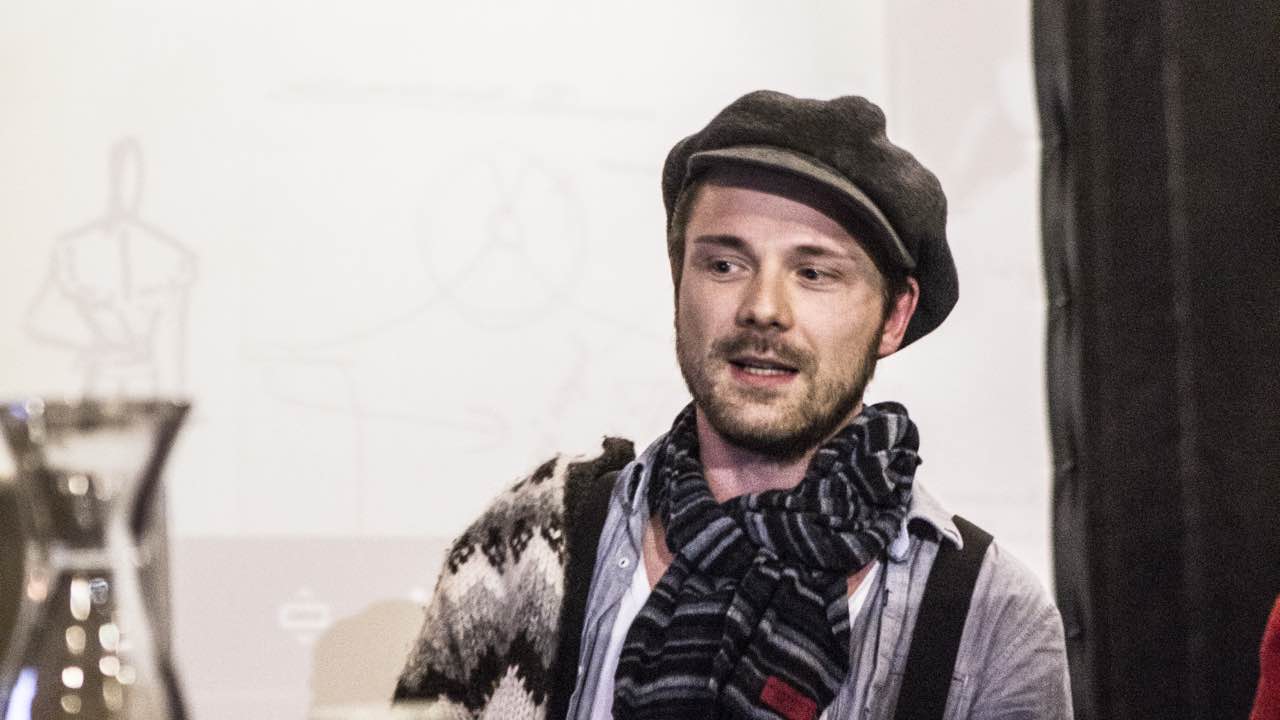
Jexper Holmen also has a taste for the visceral, or more specifically the macabre, with explorations of the potentially thin boundary between the real and imaginary. His first opera Berenice was based on the novella of the same name by Edgar Allen Poe and he told of how the themes of mirrors, artificiality, dream and reality, are once again taken up in his coming opera project – explaining how they play themselves out in terms of texts, stylistic fragments, and instrumentation. He also spoke of the contract between the audience and the artwork – how the artificiality of the artwork (and in particular the opera genre) need not be a hindrance – that it is something we have the possibility of accepting and entering into.
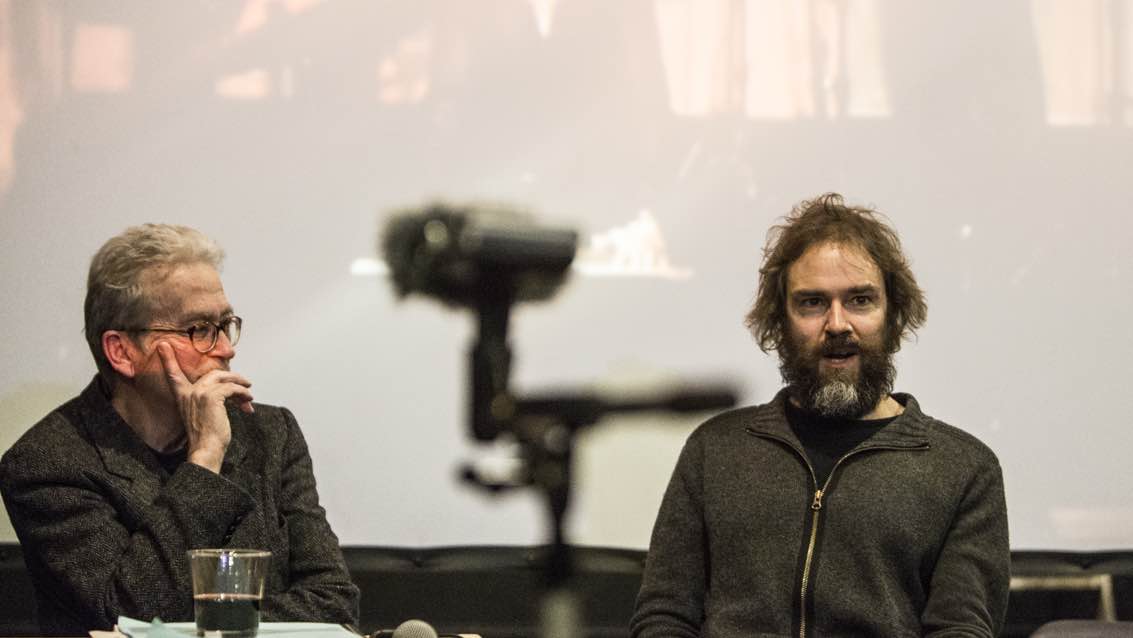
Ylva Lund Bergner has for a number of years been weaving together texts, poetry, and music, as well as considering the possibilities of light and scenography in her attempt to build something that extends the boundaries of the concert format. Often working with moods and atmospheres, rather than high drama, she was unsure that ‘opera’ was the correct designation for her activities, choosing to use the word nonetheless. Not yet having had the opportunity of a full scale production she had however too met with frustration when it came to staging her work, almost having to cancel a Darmstadt workshop presentation when the content of her piece was completely overridden with the unrelated sensationalist fantasies of the director.
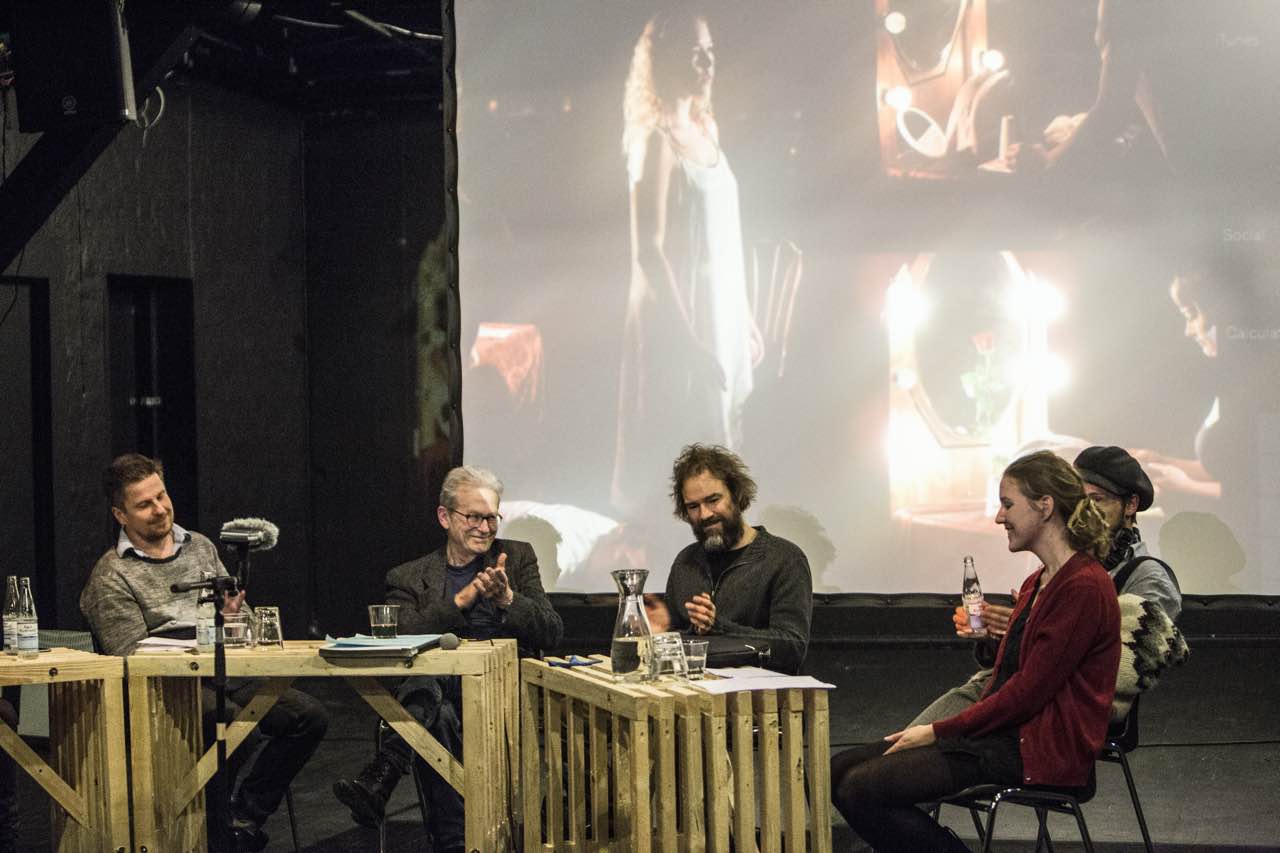
Steingrimur Rohloff could on the other hand, with his opera Babel, tell of a happier collaboration in which the roles of composer and director3 complemented each other. There was still a little confusion over just how far the composer’s reach extended, with some frustrations over specific staging instructions written into the score since they were at the core of the musical conception of certain scenes. Steingrimur emphasised however that composers too are well aware of art history, and that the duets between different kinds of media could also be mirrored in a back and forth between composer and scenographer.
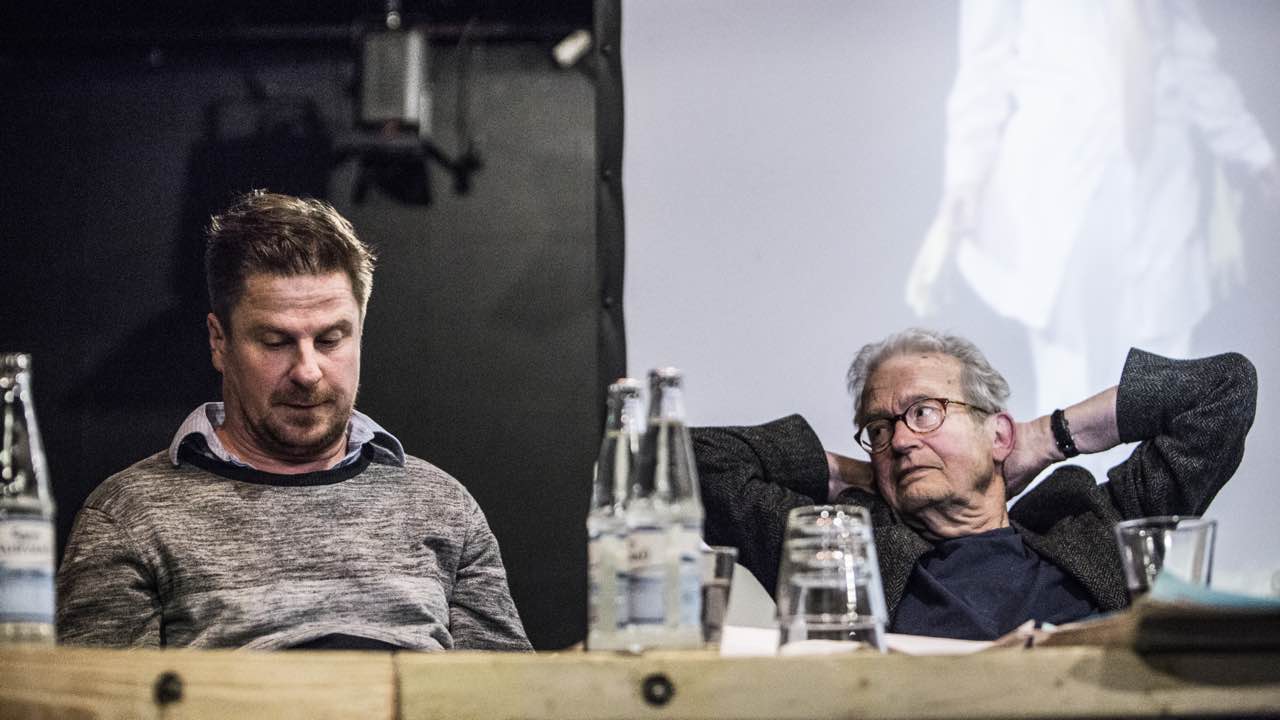
Niels Rønsholdt, in his intimate Ord for Ord (Word for Word) tackled the operatic apparatus by stripping away as much as possible. The physical and emotional distance one experiences in an opera house is replaced with something as direct and intimate as possible: A small room with a single (unschooled) singer (the composer himself), on a table at which the audience is seated. A tiny bit of ‘art’ is added to the everyday drama contained within the text messages we carry around on our smartphones – just enough to make that drama visible.

“Composers, in both life and work, nowadays move confidently between complexity, conceptualism and pop culture,” as the Neue Musik Zeitung pointed out in a recent review of Simon Steen-Andersen’s Buenos Aires. Simon represents the rare case of a composer being given permission to direct his own work, and as he himself admitted, he can understand why – it’s quite a task. Nevertheless one might ask if the time is ripe for a more auteur oriented approach to the genre.
There has also been discussion around the extent to which opera needs to be tied to opera houses, companies and subsidies: How it might benefit from a return to something more along the lines of its more agile beginnings.
There is also the angle of extending and expanding concert music from within. The lab coincided with the moving memorial demonstration in the wake of the Copenhagen shootings and I wondered aloud if one of the attractions of the operatic form lay in the possibility of social commentary – an aspect perhaps not immediately apparent in the abstract combinations of “pure” music. That proved however to be too simplistic a statement. Jexper Holmen was quick to point out that the “abstract” music I was referring to was created by composers who in the aftermath of the Second World War were eager to create a new world in response to the destruction they had just experienced.
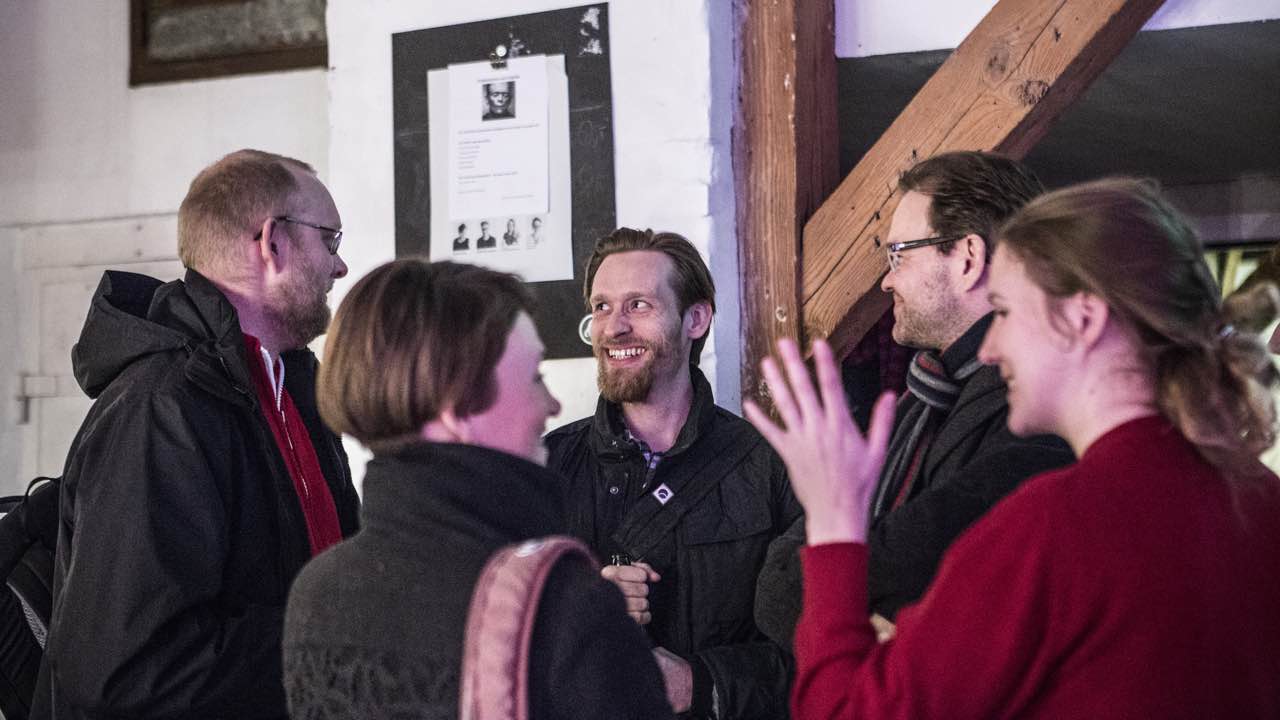
Afterwards at the bar composer Nicolai Worsaae rounded off with another, quite personal, explanation – “part of the attraction of composing composing operas is that it brings out a different side of oneself as a composer,” he suggested.
This edition of Frankenstein’s Lab was conceived of and put together by Rudiger Meyer and Katrine Gregersen Dal. Rudiger took on the moderator hat, Knud Riishøjgård helped with the sound and Katrine took care of video and lighting. Hanne Budtz-Jørgensen took the fine photographs. Thanks to HAUT for a delightful venue and to the composers and audience for a rewarding evening.
Send us an email or catch up with us on Facebook or Twitter should you have any comments or responses.
-
← Frankenstein’s Lab at Illutron
Sandra Boss , Harald Viuff , Christian Liljedahl and …
-
Directional Loudspeakers, a Tasteful Turntable and a Trip to Africa →
In which Toke Odin explains the acoustics behind his …
